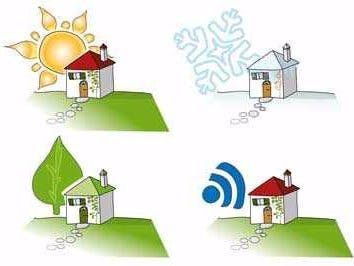The smart home is going to be part of our lives sooner than later so all tech titans are jumping into creating there own smart home apps and software. My personal favorite of course is Samsung's Artik Cloud because of its diversity and numerous options. This project I've posted is simple and just a basic overview of what Artik Cloud is capable of.
First we connect our temperature sensor to our Intel Edison board
- Connect Grove-Temperature Sensor to port A0 as shown in the picture below.
Next Step: Create temperature sensor device type.
- Sign in to Developer Dashboard
- Click "+ Create Device Type"
- Name the device type "Edison Temperature" and after give it a unique name example "edison.temperature.device"
- Click "Create Device Type" to create the device type
Next step is to create a Manifest for the new device type.
- Click "Edison Temperature" in the left column
- Click "Manifest" and then "+ New Manifest"
- Enter CurrentTemperature in the Field Name and "Double" as Data Type
- Click "Save" and then "Next: Actions"
- Leave Actions as default and click "Save New Manifest"
Final step for Artik Cloud we go to MY ARTIK Cloud to create a new device.
- Sign in to MY ARTIK Cloud
- Click to connect a new device. and then select the "Edison Temperature" device type.
- Click "Connect Device..."
- Click the Settings icon of the newly created device. In the pop-up, click "GENERATE DEVICE TOKEN…".
- Copy the Device ID and DEVICE TOKEN you see on the screen. You will use these two in your Intel XDK Iot Code.
Now lets go back to Intel XDK Iot Edition
- We open a blank template, connect to our Edison and in turn put in the code I've provided. (Don't forget to put in your "Device ID" and "Device Token" that you got from Artik Cloud).
var ID ='<Device ID>';
var TOKEN = '<Device Token>';
- After that we run our code and we should be seeing the temperature being displayed on the chart in Artik Cloud.
Last but not least we add a Rule.
- We go to "https://artik.cloud/my"
- Click on Rules
- From there you are given the choice to set specific rules for your device using program control statements.
- Now all you need to do is "Turn On" your rule and hit "Play". You do this by passing your mouse pointer over the rule you've created and these options will show up. (My Rule is that an E-mail will be send telling me that the temperature is above a certain degree Celsius that I've predefined)
- Once were finished adding our rule at this point we can add a second IOT device which in turn will be initiated once the rule we defined for the first device is "True".
- Following the steps I provided in the beginning we create another device type, define its parameters and after we go ahead and create a device from the device type we just created.
- Finally we go back to our Rules section and add another rule this time for our new device, in my case the device is called "Smart Air Conditioner".
- Now this time around our Rule will "set on" our Smart Air Conditioner as you can see in picture below.
- Last thing we do is go back to our Rules menu and run the rule.
- Now, having said all this and gone through all these steps especially with the Rules section we also have an option to control third party equipment via Artik Cloud and an app called IFTTT, the link to the IFTTT website is the following https://ifttt.com/.
- Lets take a look at a quick example.
- We go to https://ifttt.com/, sign up, and after we go ahead to create a recipe.
- When creating a new recipe this will be the first page you see.
- Next step is to click on "this"
- In the following window your prompted with a page asking you to select a channel, scroll down and select Artik Cloud.
- By clicking on Artik Cloud you are brought to a page where your asked to turn on or off the device you created initially in Artik Cloud.
- For this example I choose to turn the device on, after that I was asked to select my device.
- By clicking on "Create Trigger" you are brought to this page.
- Now we click on "that".
- Once again your prompted to select a channel and this is were the real fun takes place! Of the many devices or apps you can connect some examples are the Nest Thermostat and the Honeywell Lyric. Now for both examples you need an actual device to be able to finalize the recipe but here are two pictures showing examples of connecting the Nest Thermostat and the Honeywell Lyric.








Comments